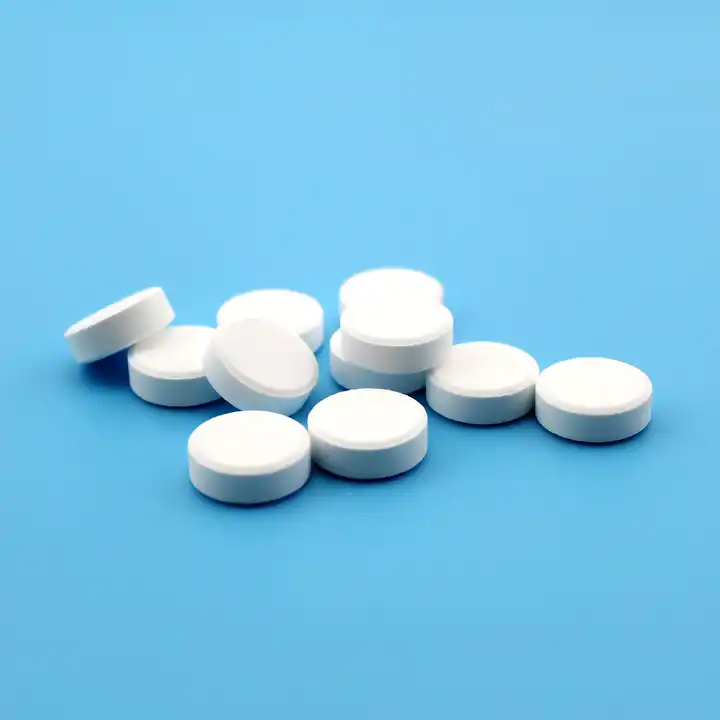The use of calcium hypochlorite in swimming pools has attracted the attention of many swimming pool owners. While the search for effective solutions also arises, questions arise about the suitability of calcium hypochlorite and how to use it correctly. This article will study whether calcium hypochlorite can be used in swimming pool water environments and conduct a detailed study.

Why calcium hypochlorite can be used as a disinfectant?
Hypochlorous acid has the ability to penetrate bacterial cell walls. This feature allows it to efficiently invade the body of microorganisms and destroy the internal structure of the bacteria. By destroying proteins and enzymes in bacteria, hypochlorous acid can effectively kill a range of different microorganisms.
Hypochlorite has strong oxidizing properties and can efficiently remove organic and inorganic pollutants in water. This purification function is very important for maintaining water cleanliness, especially in swimming pools and drinking water purification. By removing organic matter, hypochlorous acid prevents microbial growth, making the water clearer. .
Hypochlorous acid can be obtained from both calcium hypochlorite and chlorine. Calcium hypochlorite is a stable granular material produced by adsorbing chlorine using calcium hydroxide. Its stability allows it to be used as a safe and effective disinfectant for a wide range of purposes during storage and transportation.
How does calcium hypochlorite react in swimming pools?
Adding calcium hypochlorite to water causes the release of chlorine, which makes it a reliable swimming pool disinfectant. Chloride ions in the water can effectively kill microorganisms, ensuring the hygiene and safety of the swimming pool water.
After adding calcium hypochlorite, the Ca2+ content in the water body increases and the pH rises. This effect is particularly suitable for soft water containing calcium ions and a low pH value. Adjusting these parameters improves water hardness, stability, and adapts better to swimming pool use requirements.
In order to ensure the disinfection effect and on the premise of ensuring the safety of water quality, it is necessary to ensure that the chlorine content in the water quality is between 0.4-0.6 mg/L. This helps keep the chlorine concentration in the water within an ideal range, thereby ensuring its efficient killing of microorganisms. .
When the concentration of organic matter in the pool water is high, mixtures such as NH2Cl, NHCl2 and NCl3 may be produced. This is produced by the reaction of chlorine molecules with nitrogen-containing compounds in the pool water. However, these mixtures can lead to a loss of disinfection effect, especially NCl3, which can give the pool water an unpleasant odor. Further increasing the chlorine dosage is necessary to promote the decomposition of NCl3. This strategy is called breakpoint chlorination and is widely used in the professional world. Only when NCl3 decomposes, can the chlorine concentration in the water continue to rise, ensuring the sustainability of the disinfection effect.
Without sufficient fresh water supply in the swimming pool for an extended period, the concentration of cyanuric acid in the water rises, triggering ‘locked chlorine’—a combination of 2-3 chlorine molecules—resulting in the loss of bactericidal effect.The exact threshold of cyanuric acid concentration causing the chlorine locking effect has not yet been determined, but it is generally believed that 160 mg/L is the most obvious.
To solve the chlorine lock problem, you can increase the dosage of chlorine or add fresh water. However, excessive chlorine can cause harm to the body, and frequent replenishment will cause a waste of resources. Cyanuric acid, as a chlorine stabilizer, can effectively prevent UV light loss and residue. It is generally added in the form of particulates, or may be produced during the dissolution of the chloride salt system. When using sodium hypochlorite or calcium hypochlorite, be sure to add chlorine stabilizer and do not stir when dry, otherwise it will be dangerous. Under certain conditions, excessive addition of sodium hypochlorite or hypochlorite will produce high concentrations of chloride ions, thereby inhibiting the growth of algae cells, reducing the odor of chloroform, and causing certain damage to organic matter.
All in all, while calcium hypochlorite is an effective swimming pool sanitation option, it is important to follow proper guidelines and precautions. But the antiseptic effects of these chemicals in swimming pools should not overshadow the importance of responsible use of these chemicals. Swimming pool owners should follow recommended concentration, frequency of use and safety precautions. Finally, a complete swimming pool can not only ensure the safety of swimmers, but also extend the service life of swimming equipment.